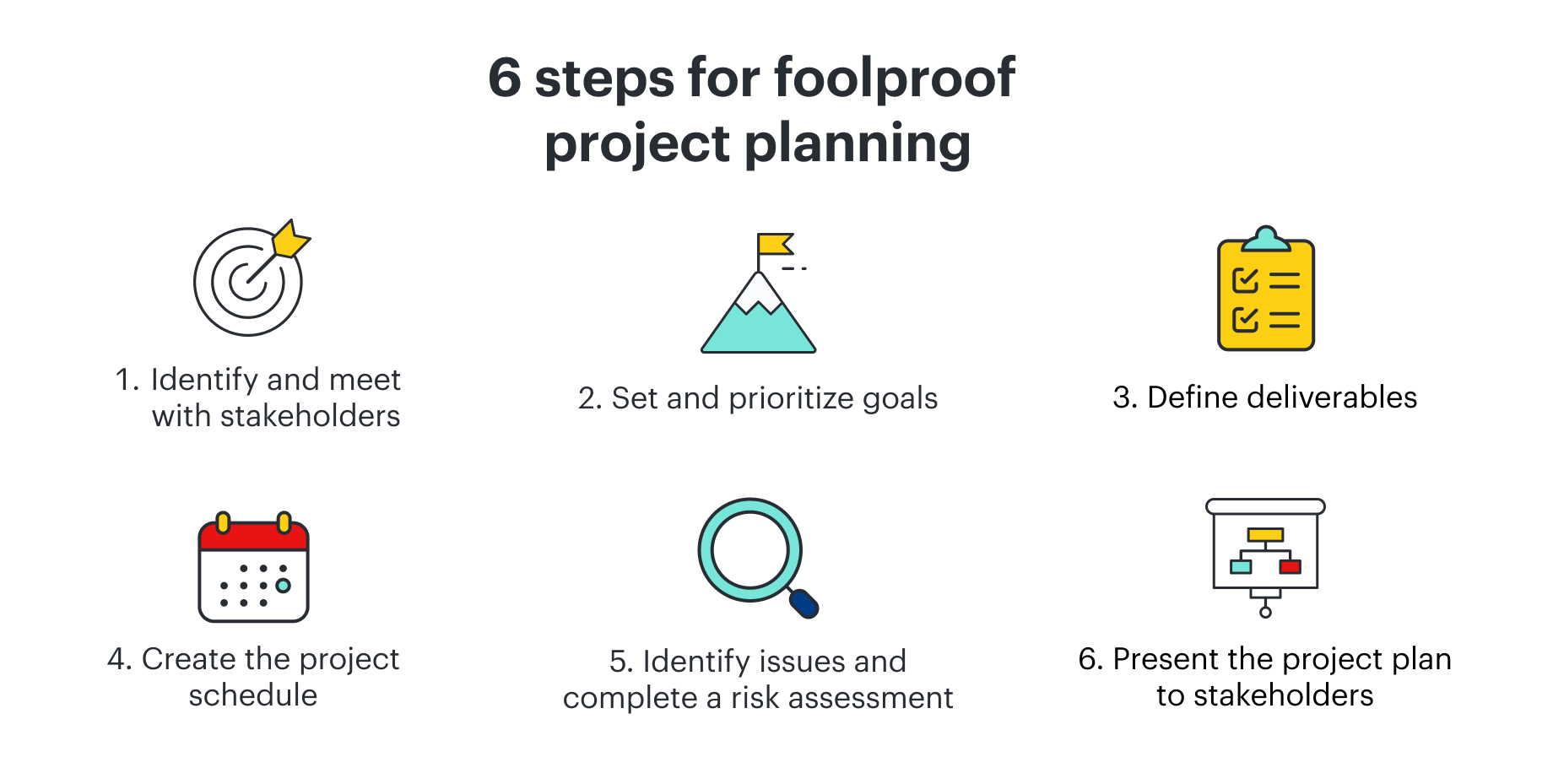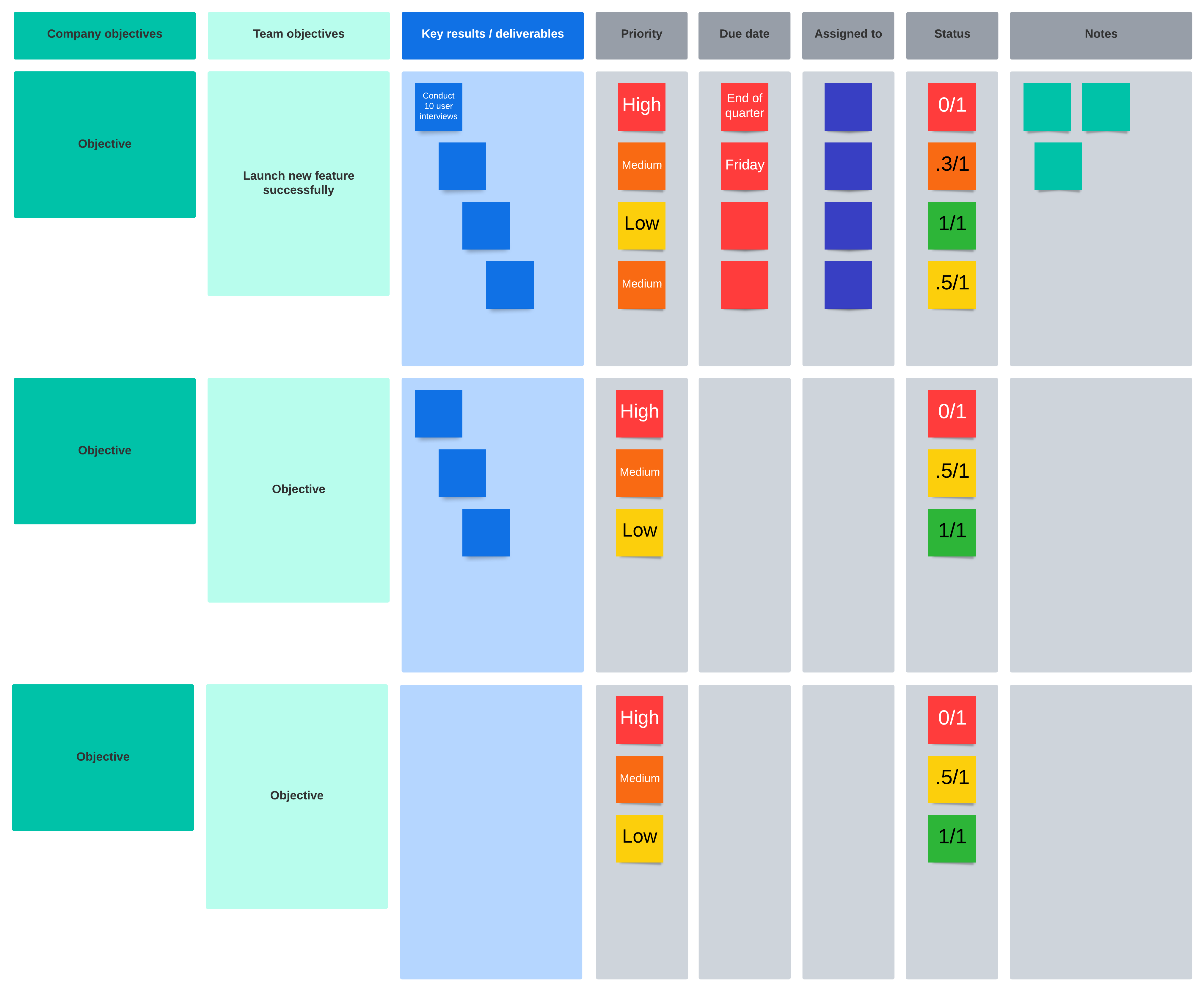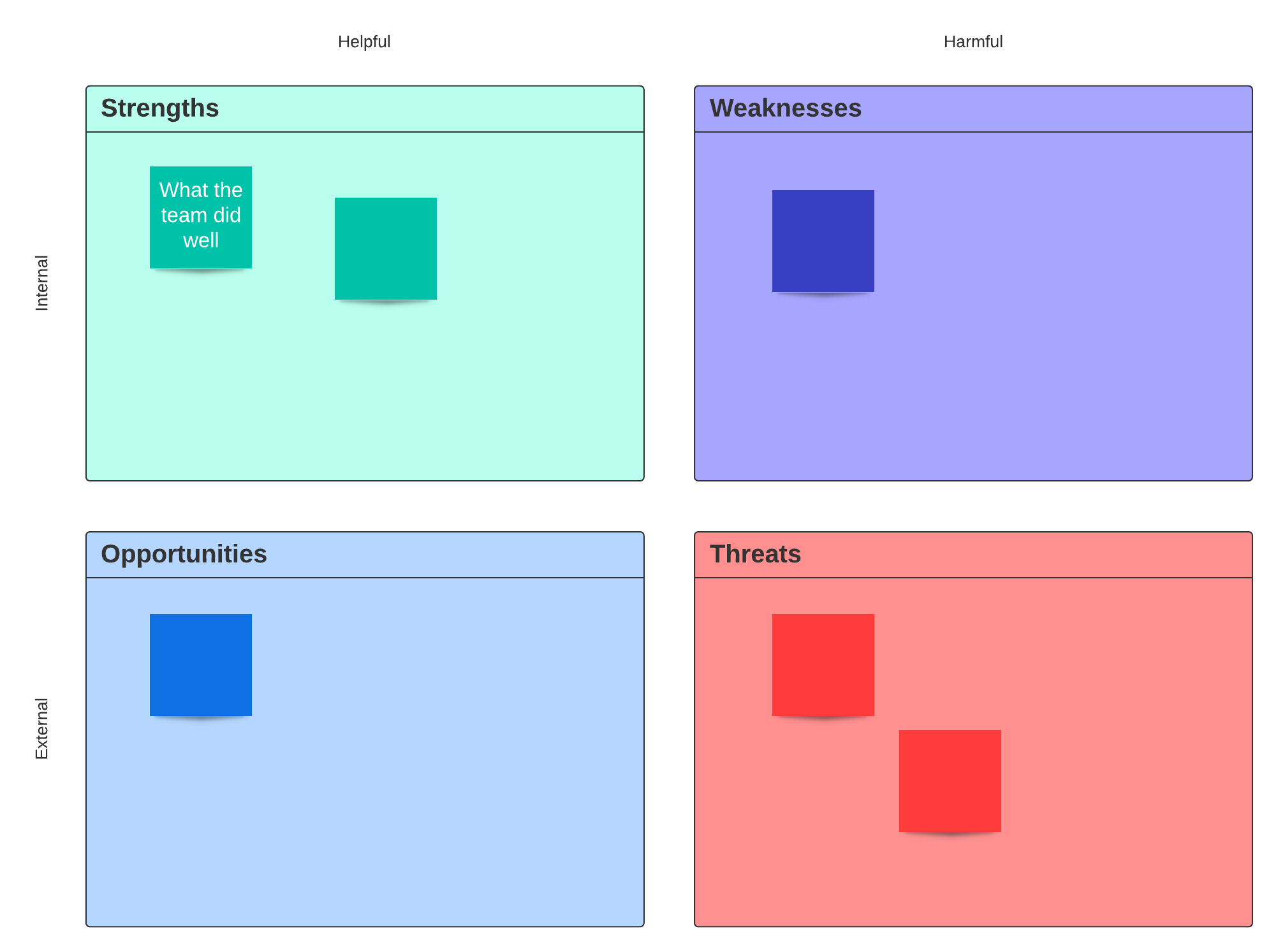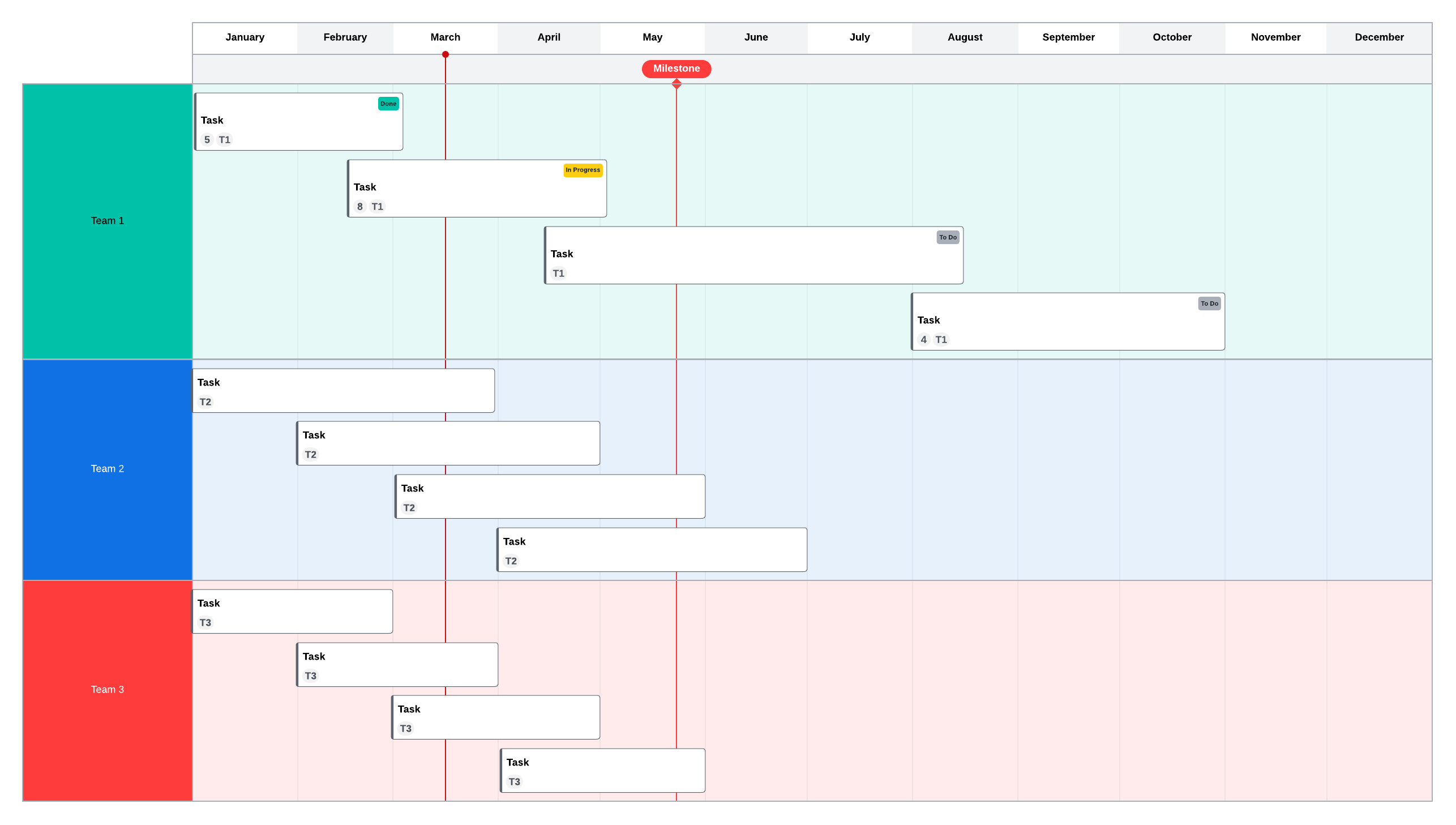
Project management basics in 6 foolproof steps
Reading time: about 9 min
Topics:
Creating a project plan is essential for identifying goals, reducing risks, guiding teams and stakeholders, and meeting deadlines. All of which help deliver your product or service on time.
The future of entire organizations is often dependent on comprehensive, well-organized project planning. In this post, we’ll cover project planning basics and six key steps to making sure your team stays on track.
What is a project plan?
Perhaps the most important component of project management basics, a project plan is a formal document that outlines how a team will strategically approach a project. It explains in detail how a project is executed, controlled, and monitored, measuring the progress made to achieve a desired goal.
Those details might include project scope, key objectives, performance measurement baselines, and subsidiary improvement plans. Usually, project plans are visually expressed as Gantt charts.
Because a project plan is such a critical part of the overall project development process, it’s not enough to just follow project planning steps. It’s about creating a project plan that is foolproof.
6 steps to creating a foolproof project plan
French writer, poet, and storied aviator Antoine de Saint-Exupery famously said, “a goal without a plan is just a wish.” No place is this maxim more fitting than the project development process.
When creating a project plan (and a foolproof one at that), there are several factors to consider:
- The stakeholders involved in your project
- The goals your project aspires to achieve
- The deliverables your project must fulfill
- The schedule your project needs to follow
- The issues to identify and risks to assess
- The project plan to present to stakeholders
Even though the specific requirements or demands of your project may vary, these six objectives will consistently lay the groundwork and cover the most important project management basics.

1. Identify and meet with stakeholders
When it comes to project management basics, getting everyone on board from the beginning is one of the most significant project planning steps. This will encompass identifying and meeting your stakeholders, then understanding their demands and expectations before you can proceed.
In project development, a stakeholder can be an individual or an organization. They are actively involved in the project plan and find their interests affected (for better or worse) by its outcome.
While creating a project plan, the various stakeholders you’ll find at most organizations include:
- Team members
- Senior managers
- Executive sponsors
- Clients or vendors
- Investors or financiers
- Customers or end-users
Obviously, not all stakeholders work directly with (or for) you. However, it’s the project manager who keeps the stakeholders engaged, informed, and committed to the project plan. Throughout the project development process, stakeholders will play an integral role in the project’s success.
Meeting with stakeholders provides necessary insight into determining project budgets, setting timelines, finalizing details, and avoiding miscommunication in the project development phase.
After you meet with stakeholders, record those insights in a scope statement to help keep all parties on the same page.
2. Set and prioritize goals
A scope statement is a summary of your project’s resources, deliverables, tasks, and features. It acts as an outline of your project’s key metrics and the goals or objectives you plan to achieve.
Meet with your stakeholders and compile a list of their needs. Document the reasons behind the requests or demands they make, paying attention to how they align with the goals of the project. Make sure the project scope is clearly communicated and easily shared with every stakeholder.
The Objective Key Results (OKR) planning canvas is great for mapping out your project goals for individuals, teams, and your company at large. It allows you to compare company objectives side-by-side with team objectives, list key results and deliverables, assign priority levels, make assignments, and show status updates. Stakeholders can also post notes on the canvas to share in real time.

If you still find it hard to prioritize goals, here are some decision-making strategies you can use:
- Understand the problem: Context allows for better prioritization of time and resources.
- Streamline the decisions: Delegate or remove any choices that aren’t exclusive to you.
- Evaluate pros and cons: Consider the actual impact of choosing one goal over another.
- Take time to sleep on it: Studies show delaying a decision can lead to better outcomes.
Additionally, review the scope document to ensure the goals you’ve listed will provide the depth of options necessary to accomplish the core objectives you and your stakeholders have in mind.
3. Define deliverables
After goals are set and prioritized, the next project planning step is to define deliverables. In essence, what will your project team need to produce to fulfill the requirements of the project?
Project development will always encompass a series of deliverables. These could be described as specific outputs, which will vary depending on the role of the team member responsible for it.
Like goals, project deliverables can differ in depth and complexity but can include the following:
- Marketing studies
- Design reviews
- Usability reports
- Product prototypes
- A SWOT analysis

With your project goals in mind, put together a list of all the possible deliverables. You can also formulate a loose strategy, including a rough sequence of tasks.
Once the deliverables are defined, decide who is expected to produce them. At this stage, try to estimate the due dates for your deliverables within your project plan. Once you’re finally ready to create your project schedule, you can finalize deliverable dates and set firm milestones to track.

4. Create the project schedule
The fourth of the project planning steps is creating a project plan schedule. It’s simple enough. Reference the list of defined deliverables from the previous step, asking the following questions:
- Which series of tasks is related to this deliverable?
- How much time will it take to complete those tasks?
- What resources will be required for task completion?
The answers to these project schedule questions should come easy enough. It will all depend on how thorough you were when previously defining your project deliverables. Next, review the basic strategy you formulated for completing your deliverables and look for any dependencies.
This means identifying the logical sequence of tasks in your project schedule. Are there certain tasks that must be completed before you can begin others? To better visualize the deliverables, dependencies, and milestones in your project plan, manage your schedule using a Gantt chart.

Gantt charts show dependency relationships between all the activities of the project plan, along with the status of your project schedule at any given moment. Unlike more cumbersome online Gantt chart templates, Lucidspark makes it easy to streamline your project from start to finish.
5. Identify issues and complete a risk assessment
In project development, there will always be an element of risk. When creating a project plan, try to identify any possible issues that could affect the successful completion of any action or task.
Unlike most issues, risks are events that may happen. Their unpredictability is what makes them difficult to manage.
For example, your developer is out with the flu for over a week, delaying a product release date. Or you’ve outsourced a critical component from an overseas company and the shipment falls short 5,000 units. Or market demand exceeds your ability to produce, causing you to lose sales.
A risk assessment will prepare you for such unlikely but probable events. This is how it works:
- Create a list: Write down every risk imaginable. Keep in mind, not all risks are negative. Sometimes, unexpected events allow you to deliver even greater value to your clients.
- Determine probability: What are the odds that any risk event, good or bad, will happen? Illness is more likely than a sudden cost break. Rate by low, medium, or high probability.
- Analyze the impact: What would happen if a particular risk occurred? Which risk is most likely to push you over budget? Miss release dates? Rate impacts low, medium, and high.
A great way to summarize the appropriate response to risk is with the 4Ts of risk management: Tolerate, Terminate, Transfer, and Treat. 4T risk management charts help organize and track your company’s risk control strategy.

Here are the 4Ts defined:
- Tolerate: When the risk is low enough to be deemed acceptable or the expense involved in reducing it isn’t cost effective, no action is taken. Such risks should still be monitored.
- Transfer: This technique is about transferring responsibility for the risk to a third party in the form of insurance or by hiring a business better equipped to handle it on your behalf.
- Treat: This is a method of controlling a risk by using actions to help minimize its impact ahead of time, reduce the chances it will happen, or address the risk after it’s occurred.
- Terminate: The simplest, yet most overlooked, way to deal with risk, this approach is the one to favor when possible. It requires a change in process or removal of the risk factor.
It’s best to deal with high-risk factors or events early on when creating a project plan. Whenever feasible, give yourself a time buffer around any critical or complex tasks to account for delays.
6. Present the project plan to stakeholders
The sixth and last of the project planning steps, presenting a project plan can be intimidating at first. Whatever the project, big or small, simple or complex, just remember these tips:
- Explain how the project plan addresses the expectations of your stakeholders
- Make sure the presentation is an open discussion, not a one-sided plan report
- Know your audience and determine who needs to see which reports and how often
- Confirm that your stakeholders understand their project roles and responsibilities
- Share the project plan in a format that’s easy to access, view, update, and track
Putting together a foolproof project plan takes time, effort, and hard work. But by using these proven project planning steps, your ability to streamline the project development process, keep stakeholders engaged, and meet deadlines will soon be second nature.

Surpass your goals on your next project with Lucidspark.
Sign up for freeAbout Lucidspark
Lucidspark, a cloud-based virtual whiteboard, is a core component of Lucid Software's Visual Collaboration Suite. This cutting-edge digital canvas brings teams together to brainstorm, collaborate, and consolidate collective thinking into actionable next steps—all in real time. Lucid is proud to serve top businesses around the world, including customers such as Google, GE, and NBC Universal, and 99% of the Fortune 500. Lucid partners with industry leaders, including Google, Atlassian, and Microsoft. Since its founding, Lucid has received numerous awards for its products, business, and workplace culture. For more information, visit lucidspark.com.
